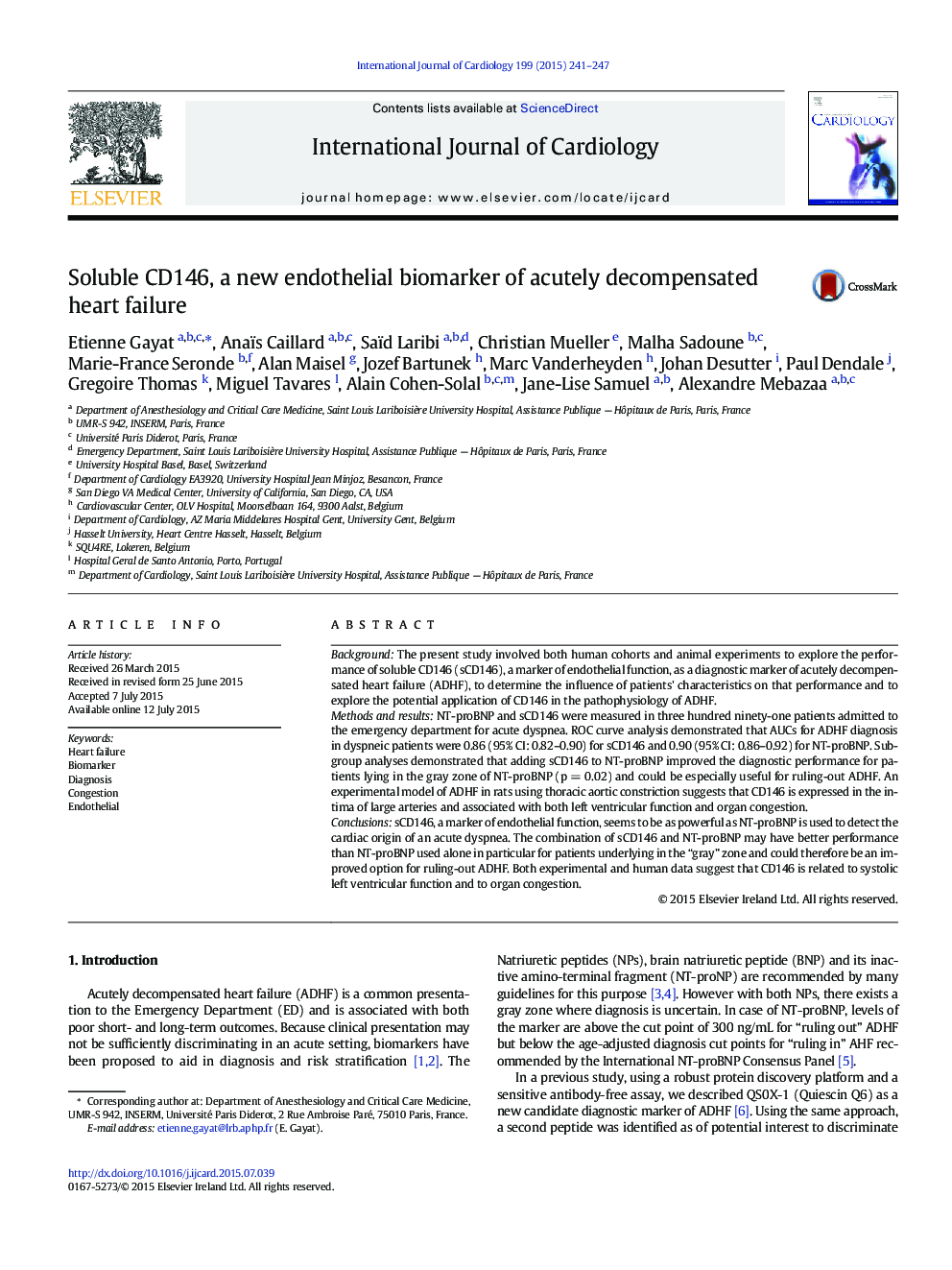| Article ID | Journal | Published Year | Pages | File Type |
|---|---|---|---|---|
| 5965879 | International Journal of Cardiology | 2015 | 7 Pages |
BackgroundThe present study involved both human cohorts and animal experiments to explore the performance of soluble CD146 (sCD146), a marker of endothelial function, as a diagnostic marker of acutely decompensated heart failure (ADHF), to determine the influence of patients' characteristics on that performance and to explore the potential application of CD146 in the pathophysiology of ADHF.Methods and resultsNT-proBNP and sCD146 were measured in three hundred ninety-one patients admitted to the emergency department for acute dyspnea. ROC curve analysis demonstrated that AUCs for ADHF diagnosis in dyspneic patients were 0.86 (95% CI: 0.82-0.90) for sCD146 and 0.90 (95% CI: 0.86-0.92) for NT-proBNP. Subgroup analyses demonstrated that adding sCD146 to NT-proBNP improved the diagnostic performance for patients lying in the gray zone of NT-proBNP (p = 0.02) and could be especially useful for ruling-out ADHF. An experimental model of ADHF in rats using thoracic aortic constriction suggests that CD146 is expressed in the intima of large arteries and associated with both left ventricular function and organ congestion.ConclusionssCD146, a marker of endothelial function, seems to be as powerful as NT-proBNP is used to detect the cardiac origin of an acute dyspnea. The combination of sCD146 and NT-proBNP may have better performance than NT-proBNP used alone in particular for patients underlying in the “gray” zone and could therefore be an improved option for ruling-out ADHF. Both experimental and human data suggest that CD146 is related to systolic left ventricular function and to organ congestion.
